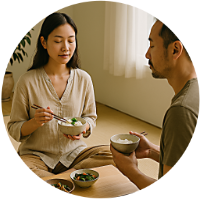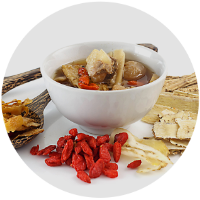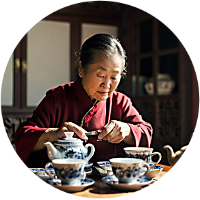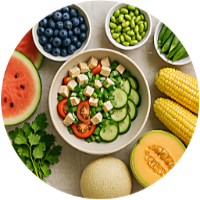Simple Herbal Teas for Everyday Use
In Chinese culture, tea is more than a drink—it’s a quiet ritual of self-care, often guided by the seasons or one's state of health. While green and oolong teas are well known, many Chinese households also turn to gentle herbal infusions that aren't classified as medicine but still offer subtle support for the body and mind. These mild teas, often brewed with just a few dried ingredients, are rooted in the principles of traditional Chinese medicine (TCM) and form part of daily Yangsheng (养生), or life nourishment.
One of the most common is chrysanthemum tea (菊花茶 júhuā chá). Pale yellow with a floral, slightly bitter taste, it’s known in TCM for clearing heat and soothing the eyes. It’s especially popular in warm weather, or for those who spend long hours looking at screens. In early summer, it pairs beautifully with a few goji berries to balance the cooling nature of the flower with the gentle tonifying effect of the fruit.
Goji Berry Tea (枸杞茶 gǒuqǐ chá) is sweet, slightly earthy, and deeply nourishing. Goji is said to tonify the liver and kidneys, support vision, and enhance vitality—especially when used regularly in modest amounts. It’s well-suited to middle-aged or older adults, or anyone recovering from fatigue. Simply add a small handful of dried berries to hot water and let them steep. The berries can be eaten once the tea is finished.
For digestion and emotional balance, Dried Tangerine Peel Tea (陈皮茶 chénpí chá) is a quiet staple. Often aged for several years, the peel has a warming, slightly bitter taste that helps regulate Qi and reduce bloating. It’s ideal after a heavy meal or when stress causes the stomach to tighten. Just a few pieces steeped in hot water are enough to create a fragrant, grounding cup.
These teas are not prescriptions—they're food-level remedies, appropriate for regular use by most people. They also reflect seasonal wisdom. For example, chrysanthemum tea is best in spring and summer, while aged tangerine peel feels right in cooler months when the digestive system craves support.
In a world of superfood trends and complicated blends, these teas offer a quieter alternative. There’s no need for a tea strainer, timer, or measuring spoon. Each ingredient is often used alone or combined with one or two others, keeping the process simple and intentional. A teacup, a few dried flowers or fruits, and a kettle of hot water are enough.
Drinking tea regularly can help tune the senses to the body’s changing needs. They don’t act as quick fixes, but as gentle nudges toward balance. In that way, they reflect one of the most enduring principles of Chinese wellness: to support the body not only when it is sick, but especially when it is not.
Vocabulary Guide
yangsheng (养生) – “nourishing life,” the practice of preserving health through lifestyle, food, and awareness
júhuā chá (菊花茶) – chrysanthemum tea
gǒuqǐ chá (枸杞茶) – goji berry tea
chénpí chá (陈皮茶) – dried tangerine peel tea
qi (气) – vital energy or life force, often associated with circulation and emotional balance







